
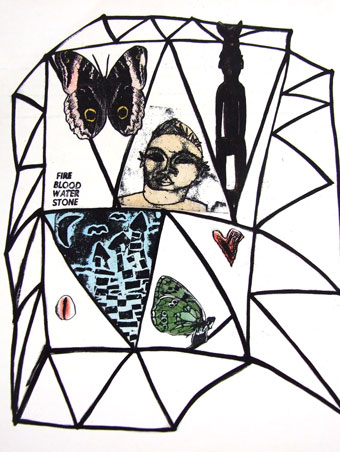
Paper Shield. Montage of paint on paper. Postcard.
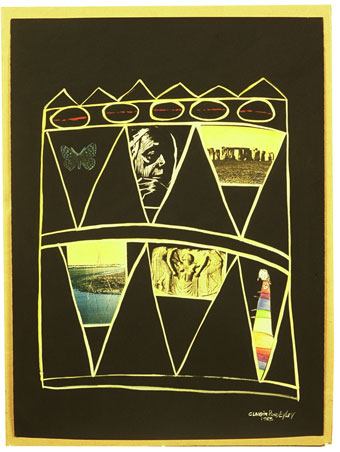
Kathe Kollwitz. Shield work on paper, 1984. 100x80
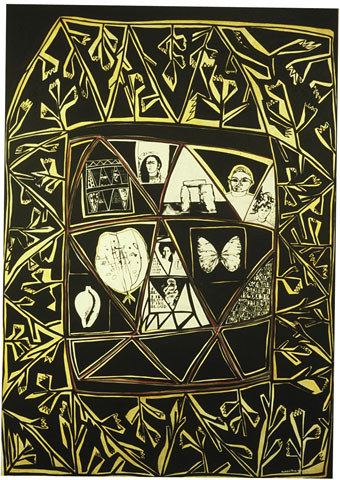
Acrylic paint on canvas. 210x150
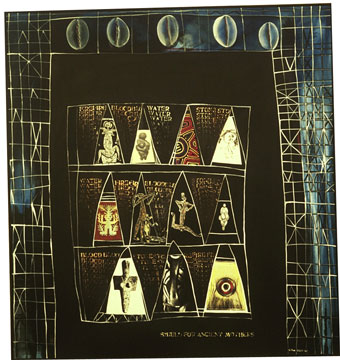
Shield For Ancient Mothers. Acrylic and paper collage on canvas.
1983. 1020x1003
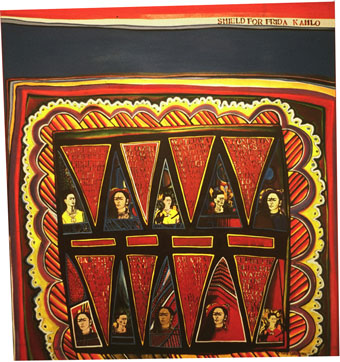
Shield for Frida Kahlo
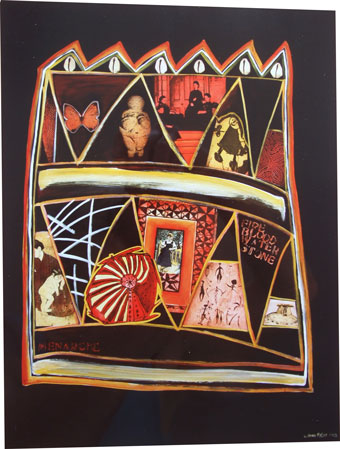
Menarche Shield for Brigid. Acrylic, paper and photomontage on hardboard.
1983. 1230x920
Shield Paintings
Images from art made by women of other cultures are a continuous theme in the series of “shield” paintings she began in 1983.
The repeating triangular forms of a shields, first seen in an Australian museum, have both intrinsic and structural uses for her. They allow her to use a collage technique, building up a pattern of images and symbols; they create a net-like form in which all images have equal weight and importance.
In “Shield For Ancient Mothers” 1983, Claudia Pond Eyley alternates fertility images with repeated words; fire, water, blood and stone which are the spiritual elements of that constant female symbol, the moon. Not all the figures in this “shield” are from ancient or tribal cultures. At the top is a childhood drawing made by one of Claudia Pond Eyley’s daughters and at the lower right appears a detail of a surrealist painting by Max Ernst called “The Lone Swimmer”.
There is no narrative in these works, instead Pond Eyley uses the cumulative power of repeated motifs to celebrate the extraordinary continuity of human life through all cultures and many thousands of years.
In a work dedicated to her elder daughter, “Menarche Shield for Brigid”, the powerfully symbolic “Venus” of Willendorf, a fertility figure made 25,000 years BC, appears alongside a butterfly which suggests flight and separation. Several other images in the work are from Pond Eyley’s own family; a photograph of her great grandmother as a young woman, another of Brigid as an adolescent in school uniform and a drawing from her childhood.
The artist’s concern is with the emotional parting of mother and daughter as the daughter reaches sexual maturity, and a celebration of the paradoxical continuity which the separation signifies.
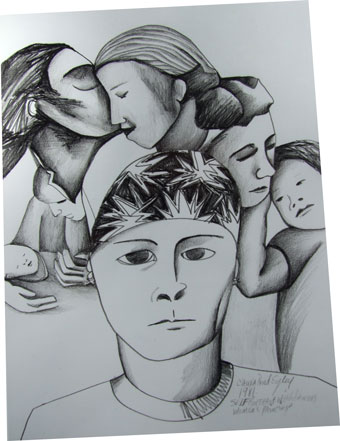
In 1981 Claudia Pond Eyley began a series of etched and drawn self portraits.
In each of them she asserts the indebtedness she feels to women of the past and the identification she claims with them. They include self portraits with the Tree of Life, with Ancient figures, with Amazon and with a Venus figure. The work above is “Self Portrait With Famous Women’s Paintings”. Claudia Pond Eyley speaks with the excitement she felt at discovering works by women artists like Kathe Kollwitz and Mary Cassatt in which the intimacy of relationships between women is joyfully expressed.
This confident celebration of the connections created by female experience through the ages has been a strong theme in feminist art and one to which Pond Eyley is particularly drawn.
Many of her own works draw on the importance of her relationships with the women in her own family and with female friends.